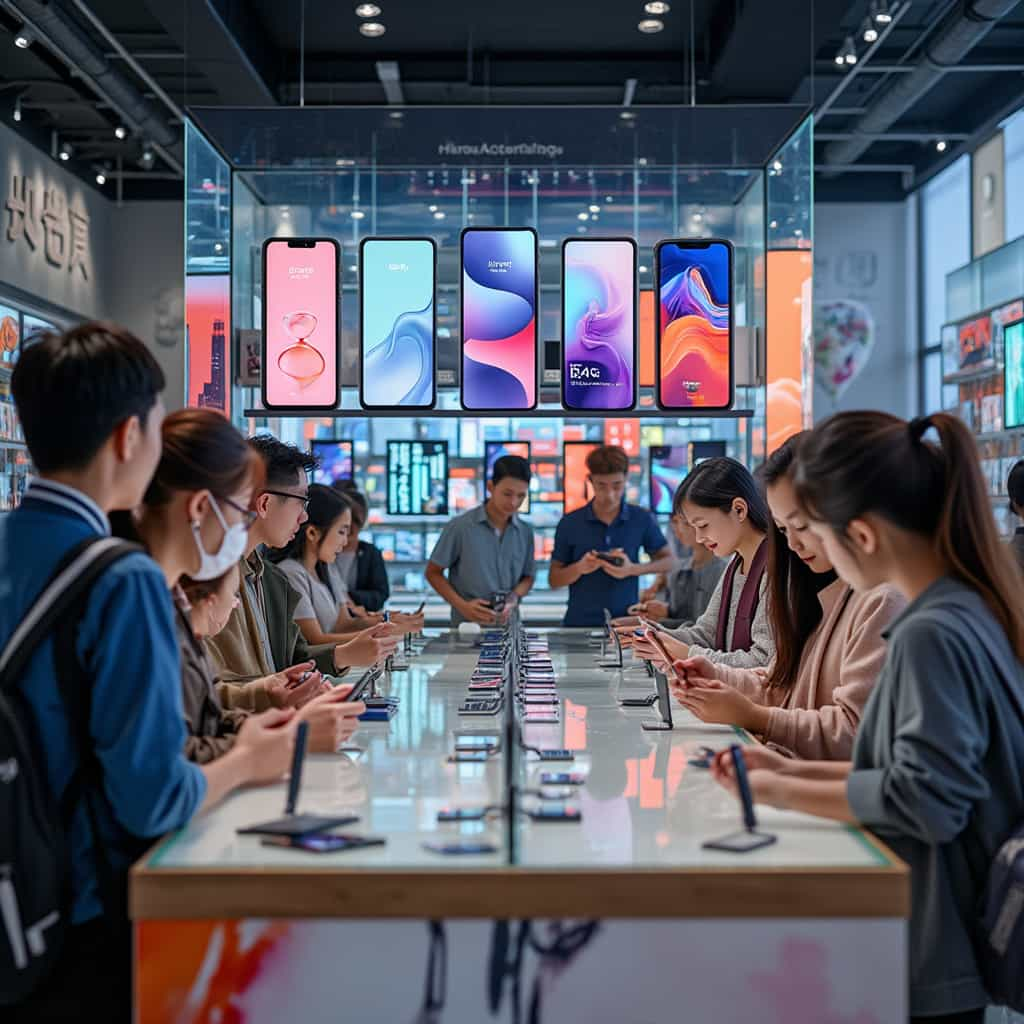In recent years, the smartphone industry has undergone a tremendous transformation, driven by continuous technological innovation and changing consumer demands. With companies like Apple, Samsung, and Huawei at the forefront, the competition has only intensified, leading to the introduction of newer, more sophisticated models. Each year, we witness the unveiling of devices boasting cutting-edge technologies and innovative features designed to allure tech enthusiasts worldwide.
The most notable trend in the smartphone arena is the integration of 5G technology, which promises faster internet speeds and more reliable network connections. According to a recent study by Gartner, 5G phones are expected to make up over 70% of global phone shipments by 2025. This shift is largely driven by consumer desire for improved connectivity for streaming high-definition content and for smoother online gaming experiences.
Another pivotal innovation is the advancement in camera technology. As social media continues to dominate our digital lives, users increasingly demand high-quality camera functions in their smartphones. The latest models from top manufacturers are now equipped with multiple lens systems, AI-enhanced features, and superior low-light performance, reshaping what consumers expect from phone photography.
Battery life remains a critical focus area within the smartphone market. This persistent issue is being tackled by advances in battery technology, with new manufacturing processes promising longer-lasting and faster-charging batteries. Samsung’s latest Galaxy series and Apple’s iPhone 15 both claim significant improvements in battery performance, offering longer usage times than their predecessors.
On the software front, artificial intelligence continues to revolutionize the way smartphones operate. From personal voice assistants like Siri and Google Assistant to predictive typing algorithms, AI integrations aim to make smartphones more intuitive and user-friendly. According to a report by IDC, AI-related applications are one of the primary selling points for current-generation smartphones, influencing nearly 40% of purchase decisions.
The market for smartphones also sees significant variations across different geographical regions. In North America and Europe, premium brands like Apple and Samsung dominate, with consumers prioritizing quality and brand reputation. In contrast, the Asian market, led by China and India, witnesses a higher volume of mid-range smartphone sales, focusing on value for money and multifunctionality.
The economic impact of the global pandemic has further influenced smartphone purchasing patterns. Amidst economic uncertainty, consumers are more inclined towards affordable models. This shift has benefited brands like Xiaomi and Oppo, which offer high-spec devices at relatively lower prices. It’s notable that Xiaomi captured approximately 25% of the smartphone market share in India as of 2023.
Exploring the VoIP sector, many consumers are shifting from traditional phone services to VoIP options, drawn by the cost-savings and increased flexibility. Services like Skype, WhatsApp, and Zoom have seen substantial user growth, particularly in developing regions where traditional telecommunication infrastructure is limited. As smartphones integrate better audio hardware and software for clearer calls, this trend is expected to surge.
When looking at customer offers, retailers frequently run promotions to entice buyers, with discounts tied to trade-ins and network contracts. When considering value for money, the Samsung Galaxy A52, with its balance of features and affordability, stands out. For those on a budget, the Xiaomi Redmi Note 10 offers an impressive array of functionalities at a fraction of the high-end smartphones’ cost. For premium users seeking the latest innovation, Apple’s iPhone 15, albeit at a higher price point, provides unparalleled performance.
Purchasing a smartphone today is no longer just about choosing a device—it involves assessing network compatibility, warranty terms, and post-purchase support. Most brand offerings include a one-year warranty, with options to extend the coverage. As technology continues its march forward, the smartphone landscape is poised for even more dynamic changes, embracing sustainability, and personalized user experiences, solidifying its place as an indispensable tool in our modern lives.
You may also like
Computers: Focus on innovative technologies and the best quality-price solutions available
As technology continues to advance at an unprecedented pace, the computer industry is experiencing a renaissance. This article explores the latest models, market trends, and unique offerings in the realm of desktop computers and gaming PCs, with a focus on innovative technologies and the best quality-price solutions available.
The world of Laptops: Market Trends and the Best Buys of 2025
As we approach the midpoint of the 2020s, the world of laptops is evolving with remarkable innovations and market trends. This comprehensive article explores the upcoming models, the latest technological advancements, the best deals, and the consumer trends shaping the global laptop market.
The Future of Printing: Innovations and Trends for 2025
As we step into 2025, the world of printing is evolving at an unprecedented pace. This article explores the latest technological advancements and trends in printers, scanner models, and cartridges. Additionally, it provides insights into market dynamics, purchase trends across different regions, and offers guidance on the best value-for-money options available.
